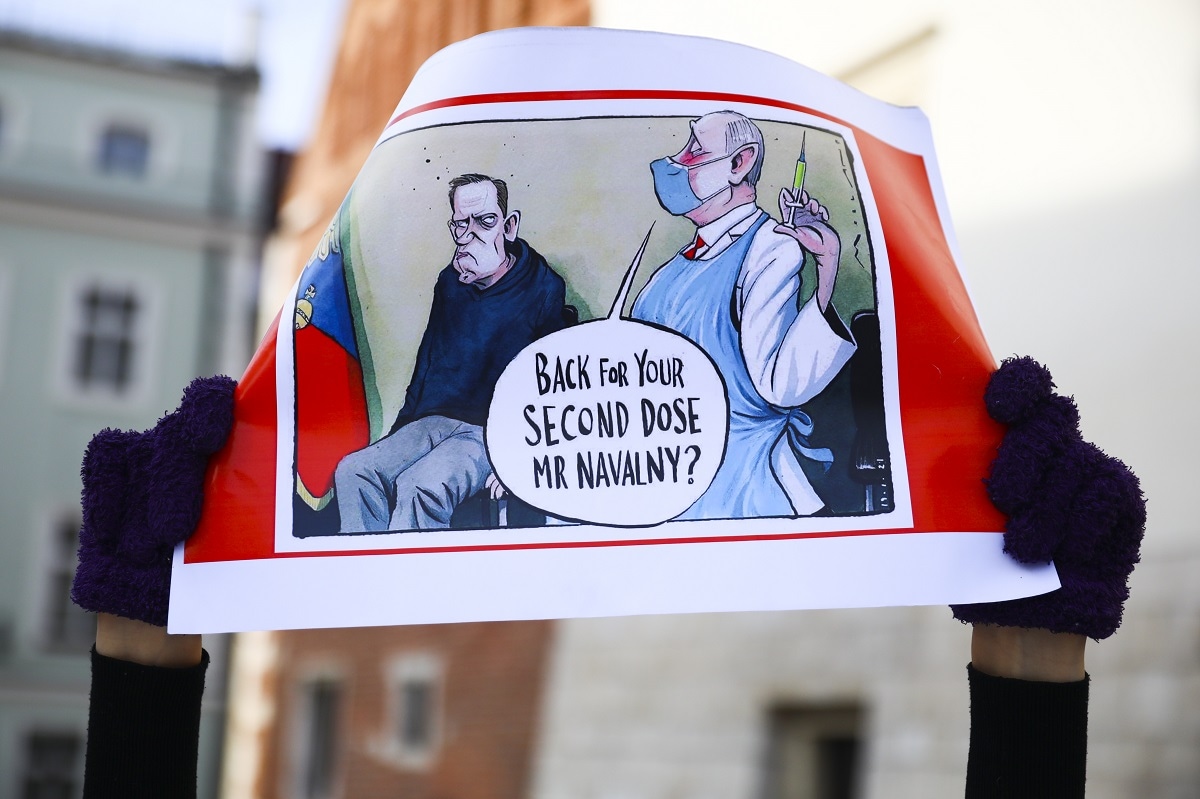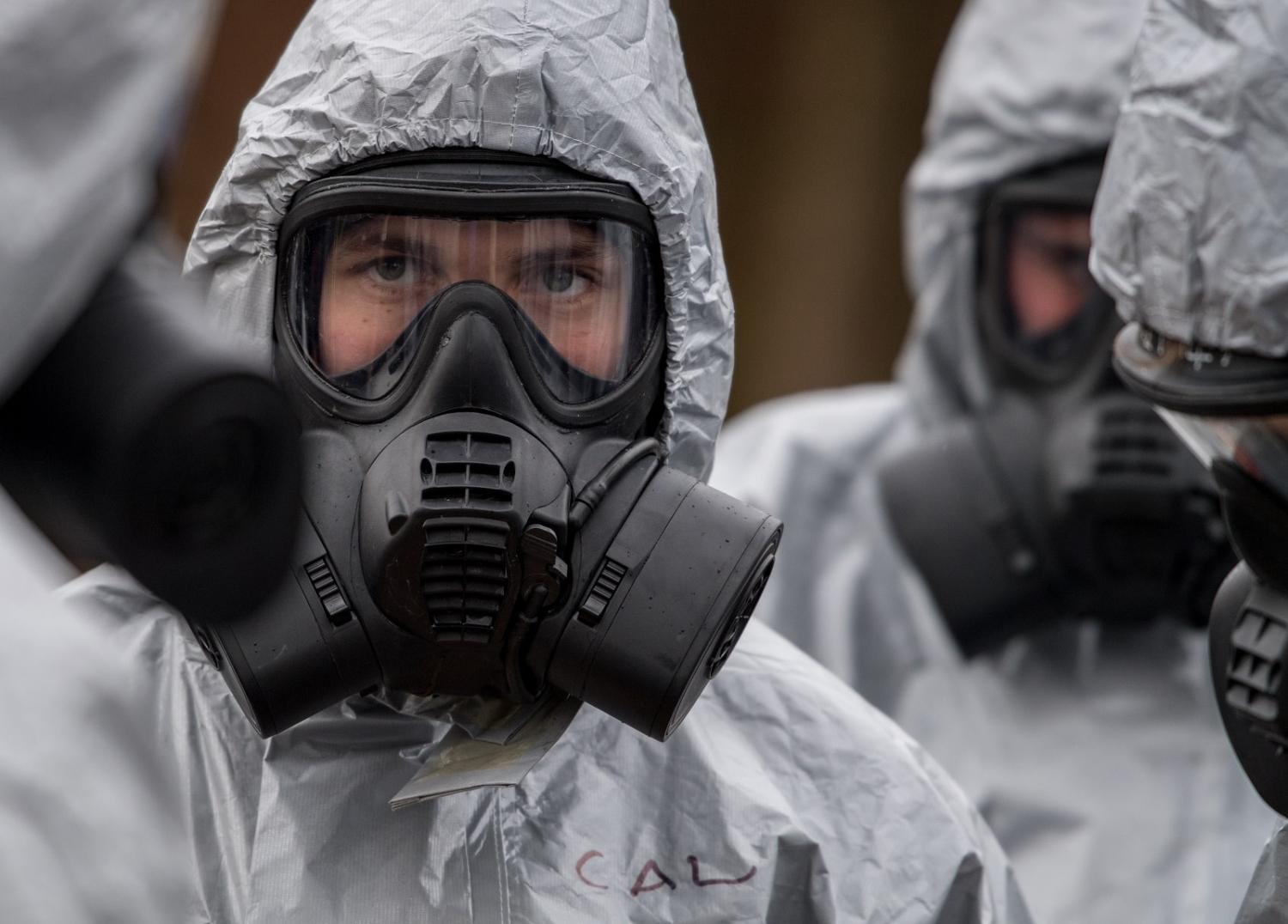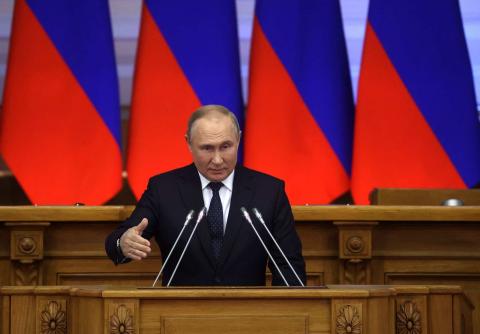In May of 2023, as anticipation of a long-awaited Ukrainian counter-offensive was building, President Volodymyr Zelenskyy touched down in the blistering heat of Saudi Arabia. This was a brief stop while en route to the kinder climate of Japan, where G7 leaders would welcome him in the city of Hiroshima. As he implored assembled members of the Arab League to understand his nation’s current struggle as it truly is – a war for national survival – Zelenskyy cast a sceptical look across the room. “I’m sure we can all be united in saving people from the cages of Russian prisons,” Zelenskyy said. “Unfortunately, there are some in the world, and some here among you, who turn a blind eye.”
This undisguised barb was no doubt intended for one head of state in particular: the former ophthalmologist-turned-dictator, Bashar al-Assad of Syria. Assad’s reappearance on the international stage in Jeddah was a chilling reminder of how one of Russia’s favourite proxies has escaped any culpability for the suffering it unleashed over the last decade. The horrific physical and psychological violence being meted out in Ukraine has its strategic genesis in the Russian intervention in Syria’s civil war. It was there that scores of civilians, hundreds of children among them, were subjected to attacks with sarin, chlorine and other chemical weapons – and then attacked again with the vilest forms of disinformation. (Assad was not responsible for these events, Russian President Vladimir Putin told Western diplomats at the time. Maybe the civilians, he suggested, were poisoning themselves.)
In late 2022, as Russia’s countrywide attack on Ukraine continued, the spectre of chemical weapons again returned to the Middle East. This time the victims were opponents of Russia’s other regional client, the Islamic Republic of Iran. Over the course of several months, thousands of Iranian schoolgirls were sickened across the country as a wave of chemical attacks hit women and children who had called for an end to repression following the death of 22-year-old Masha Amini. While this campaign apparently used agents of less lethality than those seen in Syria, a similar pattern of denial and impunity soon took hold. The schoolgirls were not poisoned, officials said, they were simply “hysterical”. Either that, or this was a conspiracy being engineered by “foreign forces”, and hence no international investigation would be welcomed.

Meanwhile in Russia, the men who had targeted former military intelligence officer Sergei Skripal and his daughter Yulia with a nerve agent of the novichok class continued to live well-funded lives. Alexei Navalny, the long-time foe of Putin poisoned in 2020, withered away in jail. As did the committed dissident Vladmir Kara-Murza, who remained debilitated by two separate poisonings in 2015 and 2017. So, too, the former President of Georgia, who Putin once said should be “hung from his balls”, and was since found to have unhealthy amounts of heavy metal in his blood causing him lasting misery.
When Ukraine initially sought to leave the Russian orbit in 2004, its first pro-EU president, Viktor Yushchenko, was poisoned with a dioxin found in the defoliant Agent Orange. Now, as Ukraine battles full-scale invasion, suspected and confirmed poisonings of Kremlin opponents have continued. In late 2022, a tenacious Russian journalist began to lose her hair at the age of 32 after being poisoned with potassium dichromate. Several members of the Russian opposition hoping to plan for a post-Putin Russia fell ill with symptoms “consistent with exposure to a nerve agent” while meeting in Berlin. Russia’s Deputy Minister of Science and Higher Education, who had recently complained of Russian policy in Ukraine, died suddenly while on a plane over Cuba. And recently, friends of Alexei Navalny claimed he had been poisoned for a second time while held in prison.
In 2023, as Russian forces face a determined Ukrainian counter-offensive, the possibility of chemical weapons being deployed against soldiers or civilians confronts us yet again. As Zelenskyy was speaking in Riyadh, footage was circulating online of phosphorus being used against soldiers holding out in the devastated city of Bakhmut. Local residents also saw thermite munitions – which international law prohibits as an anti-personnel weapon – raining down on Kherson. And following the destruction of the Nova Kakhovka dam, Ukrainian intelligence warned that Russian troops had rigged a massive ammonia plant in Crimea with explosives.
Recently, signatories to the Chemical Weapons Convention met in Geneva for their Fifth Review Conference. The summit was reportedly a frustrating affair, with Moscow and its usual coterie blocking any attempts to account for events in Syria and elsewhere. But there was one promising avenue: the work of the Investigation and Identification Team (IIT), established by the Organisation for the Prohibition of Chemical Weapons (OPCW). The IIT was set up to identify the perpetrators of specific instances of chemical weapons use in Syria. It is not, however, empowered to determine the criminal responsibility of individuals.
Some commendable work by the investigative outfit Bellingcat could prove a useful addition to the IIT, and similar mechanisms, in future. Using open-source intelligence, Bellingcat’s investigators recently managed to identify the individuals responsible for targeting civilian areas with long-range cruise missiles in Ukraine. Similar work has been done by intelligence agencies, academics and human rights groups to account for much of the “chemical weapons kill chain” employed by the Assad regime.
The cruise missile operators were an unremarkable group of people, with social media profiles and mundane routines. Obviously, neither Bellingcat nor the OPCW are prosecutorial bodies armed with the right to arrest these individuals. But having been publicly identified, perhaps they will be less inclined to take a foreign holiday any time soon.
In the case of chemical weapons, obtaining the identities of persons responsible could have a similar deterrent effect. They may be in a jurisdiction that presently sees them out of reach. But perhaps they have a property in London, a second family overseas, or maybe a wife who enjoys the Paris shopping scene. Such vulnerabilities, it could be said, might present future opportunities.

